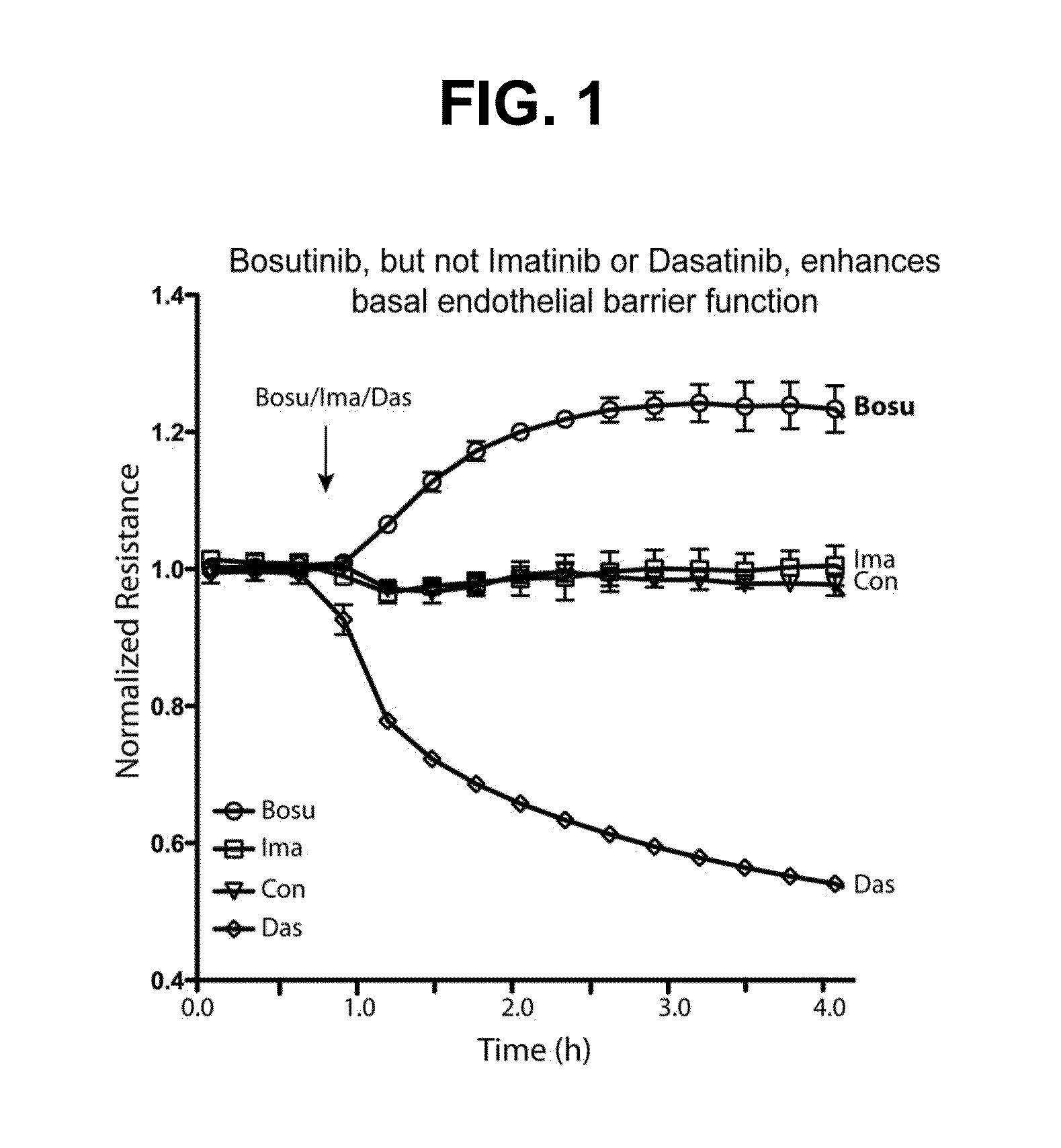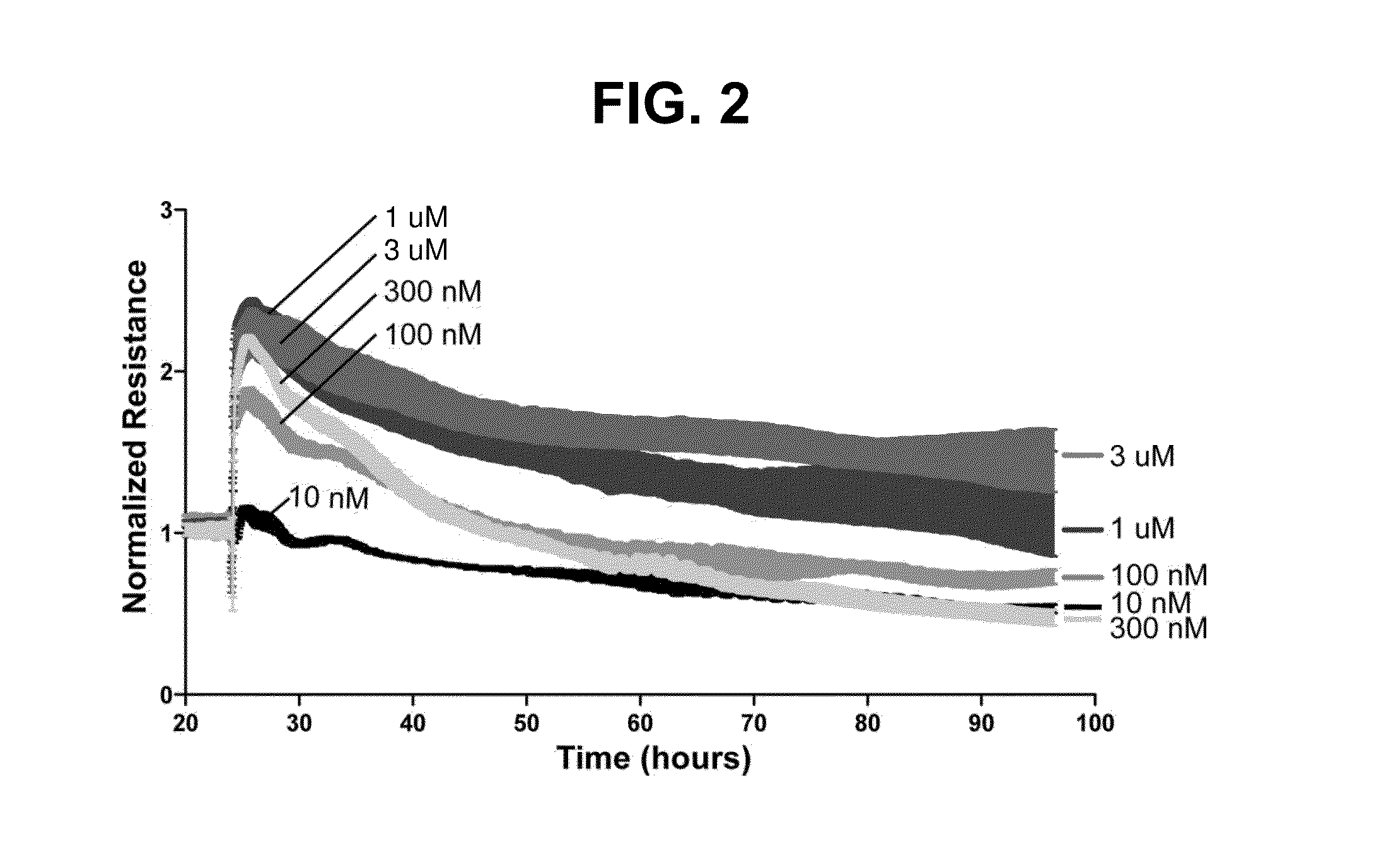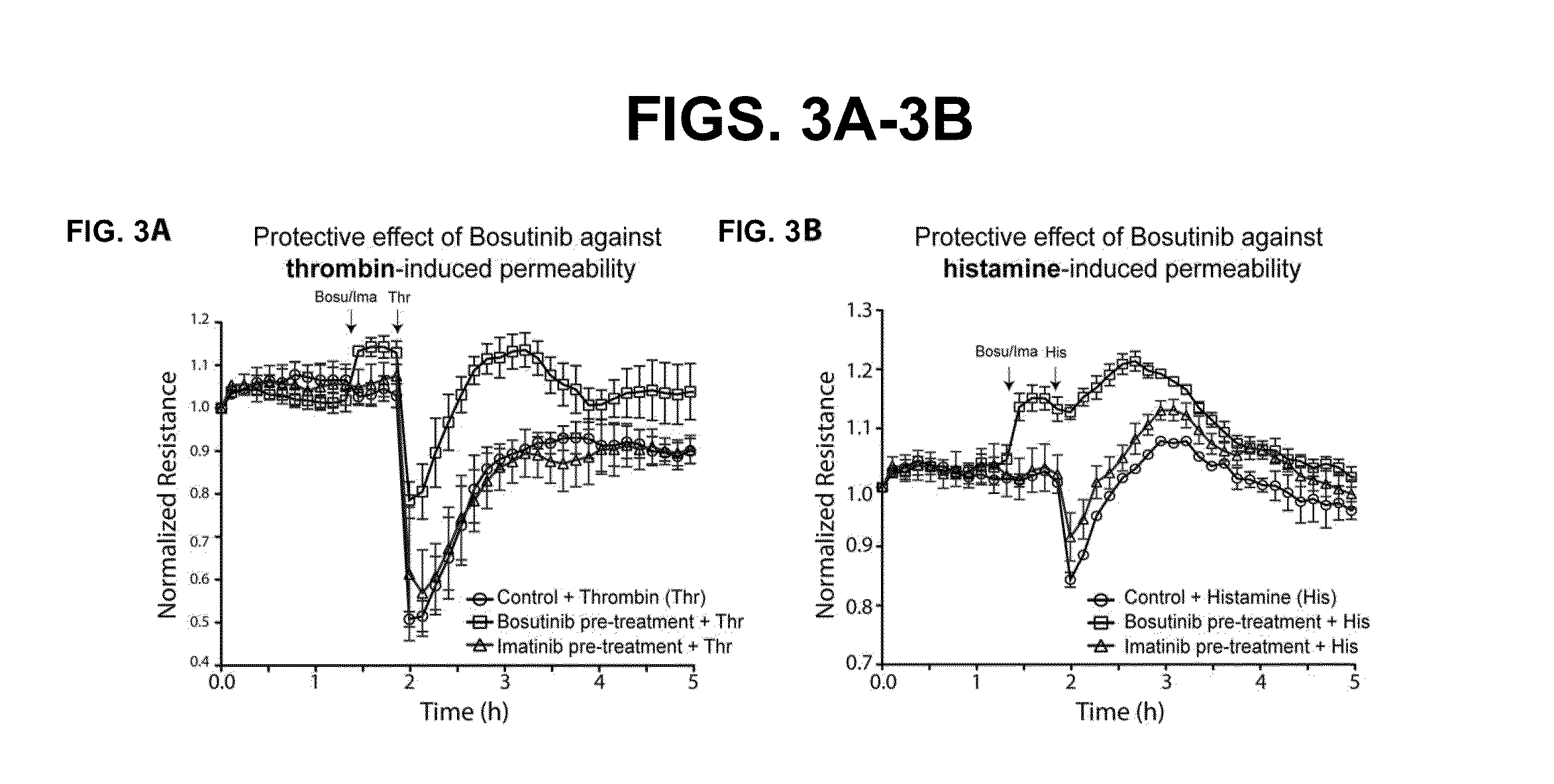Methods for treating or preventing acute vascular leak
a leakage and vascular technology, applied in the field of acute vascular leakage treatment or prevention, can solve the problems of severe organ damage, drop in blood pressure, vascular leakage, etc., and achieve the effects of improving the condition of the subject, reducing mortality, and reducing vascular leakag
- Summary
- Abstract
- Description
- Claims
- Application Information
AI Technical Summary
Benefits of technology
Problems solved by technology
Method used
Image
Examples
example 1
In Vitro Vascular Stabilization and Protection by Bosutinib
[0118]Our research focuses on the vascular endothelium, the monolayer of endothelial cells that function collectively to generate the critical barrier that separates the blood circulation and the underlying tissues. Angiopoietins are growth factors that can influence both endothelial cell growth and barrier properties. In in vitro studies designed to dissect signaling pathways downstream of Angiopoietin-2 (Ang-2) in endothelial cells we employed imatinib, dasatinib and bosutinib as pharmacologic tools to interrupt Src / Abl signaling. In the course of this work, we made the entirely unexpected finding that in control experiments bosutinib, but not imatinib or dasatinib (FIG. 1) profoundly enhanced base-line barrier properties in otherwise untreated endothelial monolayers. Imatinib had no effect and dasatinib reduced endothelial barrier function. Bosutinib showed an unprecedented capacity to elicit sustained barrier enhancement...
example 2
Benchmarking Bosutinib Against Other Barrier Protection Agents
[0120]A range of physiologic and pharmacologic agents have been well characterized for their barrier stabilizing properties including hepatocyte growth factor, activated protein C (APC), sphingosine-1 phosphate, adrenomedulin, Y-27632, and fasudil. Several of these have shown efficacy at preventing leak in preclinical animal models and APC was temporarily FDA approved for treatment of septic shock, based in part on its ability to stabilize the vascular barrier. Benchmarked against APC and many of the other “classic” barrier protection agents, we find that bosutinib exhibits unprecedented efficacy and duration of action (FIG. 6). Based on these and other mechanistic findings (described below), we propose to develop bosutinib as novel vascular barrier protective either mono- or combination-therapy for wide ranging vascular leak pathologies (VLP). These include, but are not limited, to both relatively acute VLP such as septi...
example 3
Bosutinib Alters Endothelial Barrier Function in a Src-Independent Manner
[0121]Bosutinib, imatinib, and dasatinib all share similar efficacy against Src and Abl kinases in the low nanomolar range. However, several global target analyses have revealed a multitude of both overlapping and disparate kinases inhibited by each of these molecules in the low-mid nanomolar range (Bantscheff et al., Nat. Biotechnol., 25: 1035-1044, 2007; Rix et al., Leukemia, 23: 477-485, 2009; Boschelli et al., Eur. J. Cancer, 46: 1781-1789, 2010). Thus, our unintended and unexpected demonstration of differential effects of these molecules on endothelial cell barrier function establishes that bosutinib alters endothelial barrier function in a manner that is either independent, or at least not primarily dependent, on the intuitive targets (i.e., Src and Abl). A corollary to this is that the effects of bosutinib depend on a unique (as yet undefined) target or constellation of targets (which may or may not incl...
PUM
| Property | Measurement | Unit |
|---|---|---|
| particle size | aaaaa | aaaaa |
| time | aaaaa | aaaaa |
| time | aaaaa | aaaaa |
Abstract
Description
Claims
Application Information
 Login to View More
Login to View More - R&D
- Intellectual Property
- Life Sciences
- Materials
- Tech Scout
- Unparalleled Data Quality
- Higher Quality Content
- 60% Fewer Hallucinations
Browse by: Latest US Patents, China's latest patents, Technical Efficacy Thesaurus, Application Domain, Technology Topic, Popular Technical Reports.
© 2025 PatSnap. All rights reserved.Legal|Privacy policy|Modern Slavery Act Transparency Statement|Sitemap|About US| Contact US: help@patsnap.com



